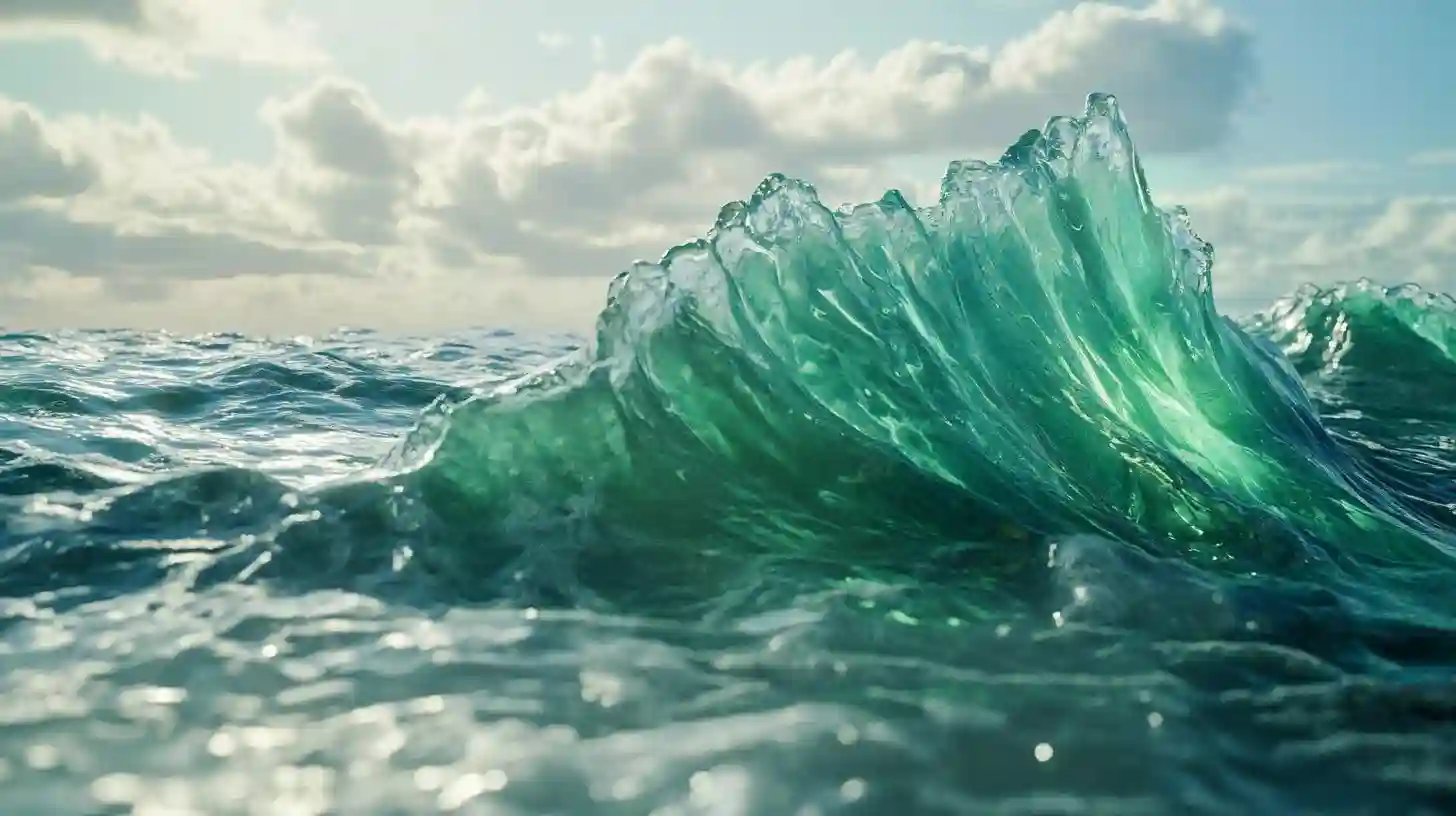
The ocean, a vast and mysterious expanse, holds secrets that have captivated human imagination for centuries. Among its many treasures lie the enchanting hues of green, particularly those reminiscent of flowing emeralds. These shades are not only visually stunning but are also indicative of some of the ocean's most diverse and intricate ecosystems. The beauty of this green hue can be traced to various elements including phytoplankton, diverse marine life, and the unique underwater landscapes that thrive in these depths.
One of the most significant contributors to the ocean's emerald glow is phytoplankton, the microscopic plants that dwell in sunlit waters. These tiny organisms, capable of photosynthesis, produce chlorophyll, giving them a greenish tint. During certain seasons, especially in nutrient-rich waters, phytoplankton blooms occur, leading to expansive patches of vibrant emerald. Such blooms play a crucial role in the marine food web as they serve as the primary energy source for countless marine species. These plants not only sustain ocean life but are also responsible for a significant portion of the Earth’s oxygen production.
The presence of emerald hues in the ocean is also influenced by the underwater topography, which can reflect and refract light in various ways. Coral reefs, for example, are often teeming with life and contribute to the beautiful coloration beneath the surface. These underwater gardens, rich in biodiversity, host myriad species, from brightly colored corals to unique fish. The interplay of light with the vibrant corals creates a kaleidoscope of colors, with emerald greens standing out prominently. The health of these reefs is essential not just for marine inhabitants but also for coastal communities that rely on them for their livelihoods and protection against storms.
In deeper regions, seaweed forests emerge as another bearer of the emerald hue. Kelp forests, in particular, are known for their towering blades that sway gracefully in ocean currents, creating underwater jungles. These forests are vital ecosystems that provide habitat and food for numerous marine organisms. They serve as nurseries for various fish species, while also helping to stabilize the coastline and mitigate climate change by absorbing carbon dioxide. Exploring these underwater realms offers an unparalleled glimpse into a world where colors dance in harmony, revealing the ecological significance of such environments.
The flora and fauna of these emerald waters play an essential role not just ecologically but also culturally. Coastal communities worldwide celebrate the ocean's bounty through traditional practices, art, and culinary customs. The brilliance of the green waters often evokes inspiration in local artists and serves as a backdrop for cultural narratives that intertwine with the sea. From stories of ancient mariners to modern-day conservation efforts, the flowing emerald has become symbolic of the need to respect and protect these oceanic realms.
However, as enchanting as the emerald depths may be, they face unprecedented threats from human activities. Overfishing, pollution, and climate change pose significant risks to these ecosystems. The lingering effects of industrial runoff can lead to harmful algal blooms, while rising sea temperatures disrupt the delicate balance of these environments. Coral bleaching, a phenomenon where stressed corals lose their vibrant hues due to temperature fluctuations, further highlights the fragility of these ecosystems. The urgency for sustainable practices and conservation efforts has never been greater.
Moreover, the allure of the ocean's emerald beauty has led to increased interest in marine tourism. Diving and snorkeling offer people firsthand experiences with the breathtaking biodiversity beneath the surface. However, with the rise of ecotourism comes the responsibility to engage in practices that prioritize the preservation of marine integrity. Responsible tourism can foster appreciation for the ocean's wonders while promoting the necessity of safeguarding these treasures for future generations.
The flowing emerald of the ocean is not merely a color; it embodies a complex interplay of life, culture, and ecology. Understanding and appreciating this unique aspect of the marine environment can inspire meaningful conversations about conservation and responsibility. As researchers and environmentalists continue to unravel the secrets of the ocean, they illuminate pathways to ensure that these dazzling emerald shades remain a wondrous part of our planet's legacy. The ocean invites us to explore its depths, revealing precious secrets and urging us to nurture the lifeblood of countless species. Through shared stories, sustainable practices, and a collective commitment to preserving these natural wonders, humanity stands at the threshold of a brighter, more harmonious relationship with the emerald seas.